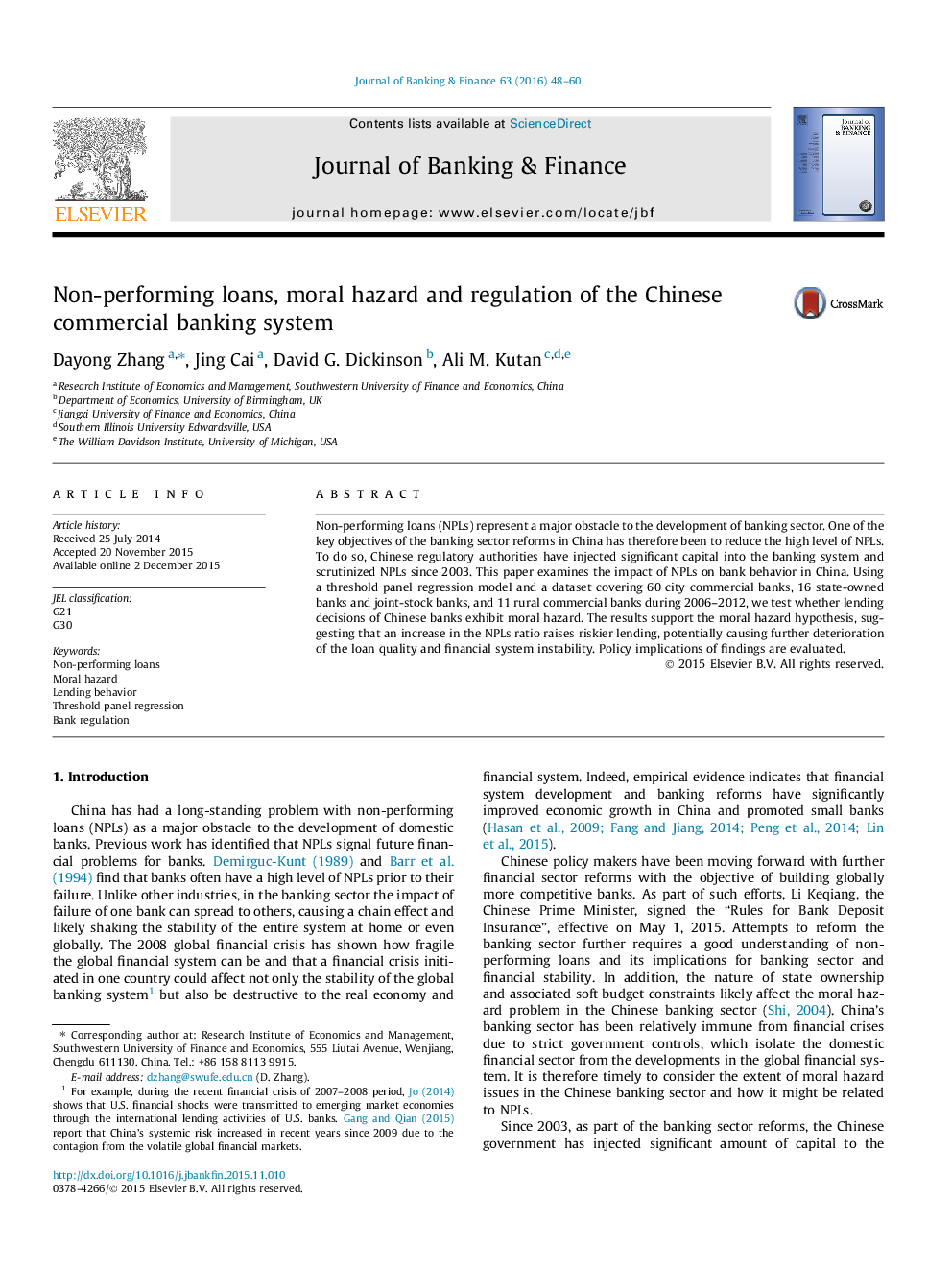| Article ID | Journal | Published Year | Pages | File Type |
|---|---|---|---|---|
| 5088451 | Journal of Banking & Finance | 2016 | 13 Pages |
Non-performing loans (NPLs) represent a major obstacle to the development of banking sector. One of the key objectives of the banking sector reforms in China has therefore been to reduce the high level of NPLs. To do so, Chinese regulatory authorities have injected significant capital into the banking system and scrutinized NPLs since 2003. This paper examines the impact of NPLs on bank behavior in China. Using a threshold panel regression model and a dataset covering 60 city commercial banks, 16 state-owned banks and joint-stock banks, and 11 rural commercial banks during 2006-2012, we test whether lending decisions of Chinese banks exhibit moral hazard. The results support the moral hazard hypothesis, suggesting that an increase in the NPLs ratio raises riskier lending, potentially causing further deterioration of the loan quality and financial system instability. Policy implications of findings are evaluated.
